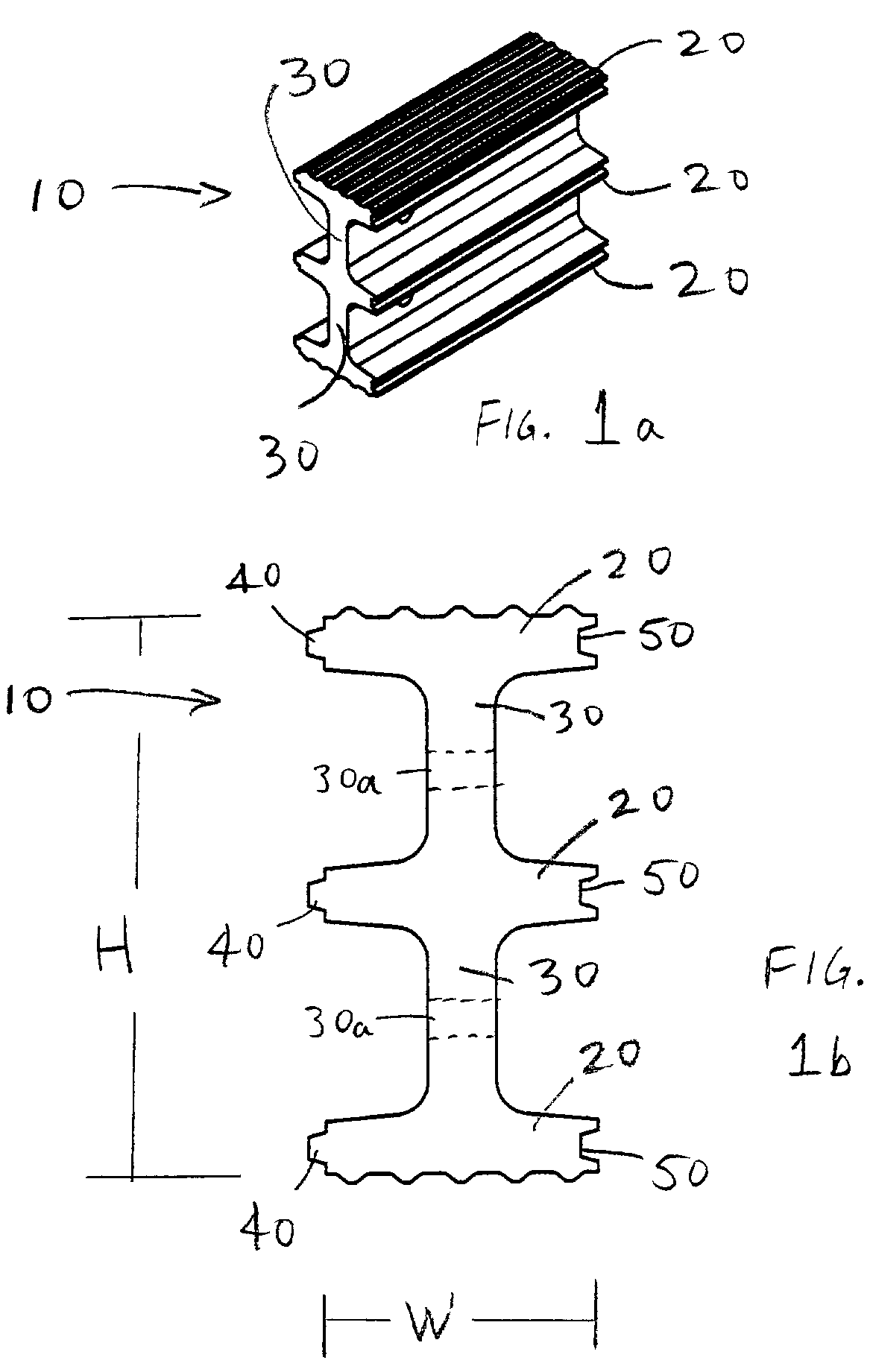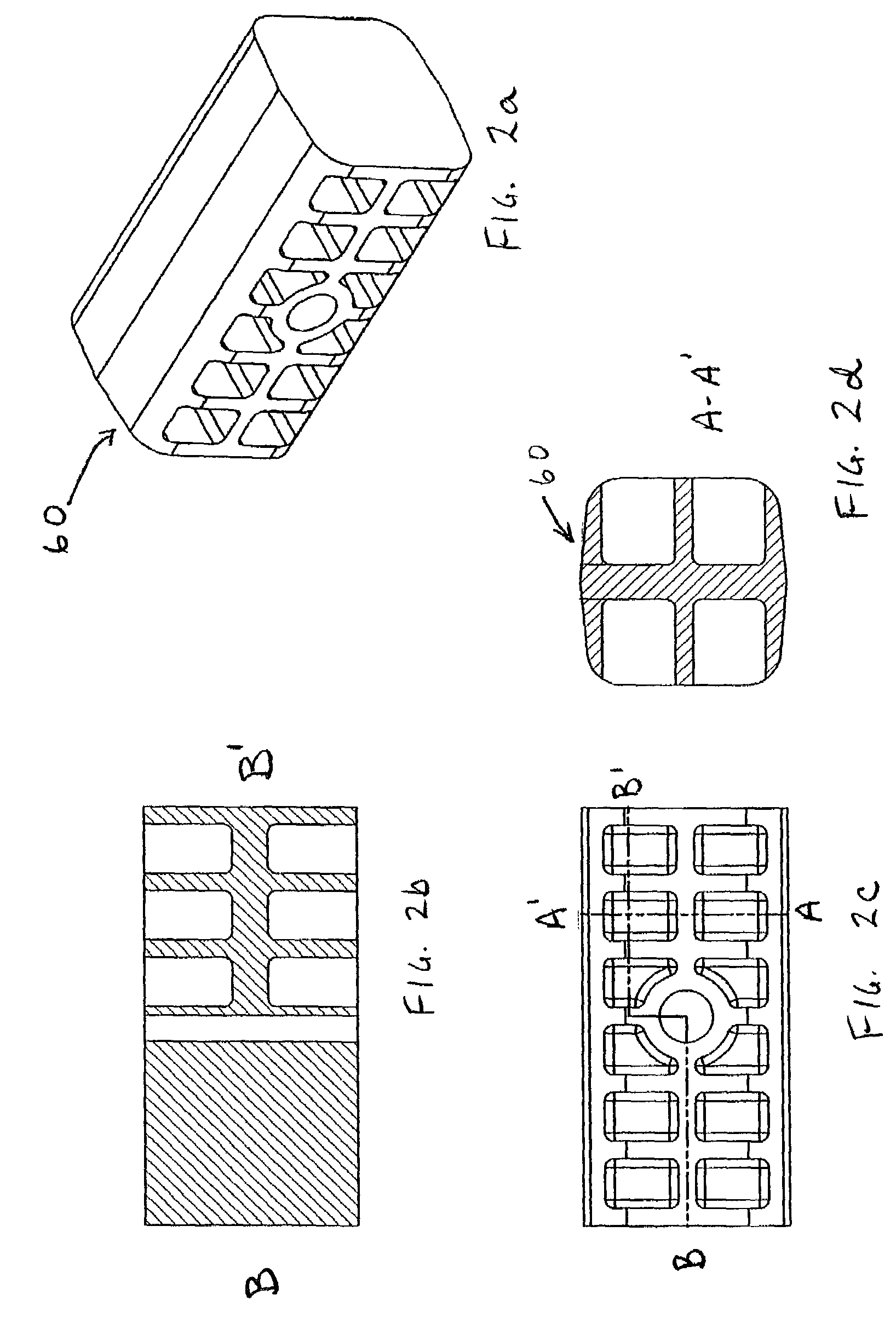Mat assembly for heavy equipment transit and support
a technology for supporting and heavy equipment, applied in the direction of girders, joists, ways, etc., can solve the problems of inability to use iron or steel i-beams for such applications, low torsional rigidity of beams, and high cost, so as to prevent distortion or bending of central webs, increase strength
- Summary
- Abstract
- Description
- Claims
- Application Information
AI Technical Summary
Benefits of technology
Problems solved by technology
Method used
Image
Examples
Embodiment Construction
[0019]While the present invention lends itself to various embodiments, as will be recognized by those having ordinary skill in this art field, with reference to the drawings some presently preferred embodiments will be described.
[0020]FIGS. 1a and 1b are perspective and cross section views of one embodiment of the I-beam structural member of the present invention. In this embodiment, beam 10 comprises three spaced apart flanges 20 connected by webs 30. In effect, a “double I-beam” is formed. Each edge of flanges 20 comprise a recurring geometric profile adapted to mesh together with an adjacent I-beam, and in the preferred embodiment is either a tongue 40 or groove 50 profile. Preferably, each flange 20 has a tongue 40 on one edge and a groove 50 on its other edge. Further, each flange on a single beam has its tongue and groove on the same side as the tongues and grooves of the other flanges on the same beam. Said another way, all tongues 40 are on the same side of beam 10, and all ...
PUM
| Property | Measurement | Unit |
|---|---|---|
| tensile strengths | aaaaa | aaaaa |
| thickness | aaaaa | aaaaa |
| thickness | aaaaa | aaaaa |
Abstract
Description
Claims
Application Information
 Login to View More
Login to View More - R&D
- Intellectual Property
- Life Sciences
- Materials
- Tech Scout
- Unparalleled Data Quality
- Higher Quality Content
- 60% Fewer Hallucinations
Browse by: Latest US Patents, China's latest patents, Technical Efficacy Thesaurus, Application Domain, Technology Topic, Popular Technical Reports.
© 2025 PatSnap. All rights reserved.Legal|Privacy policy|Modern Slavery Act Transparency Statement|Sitemap|About US| Contact US: help@patsnap.com



